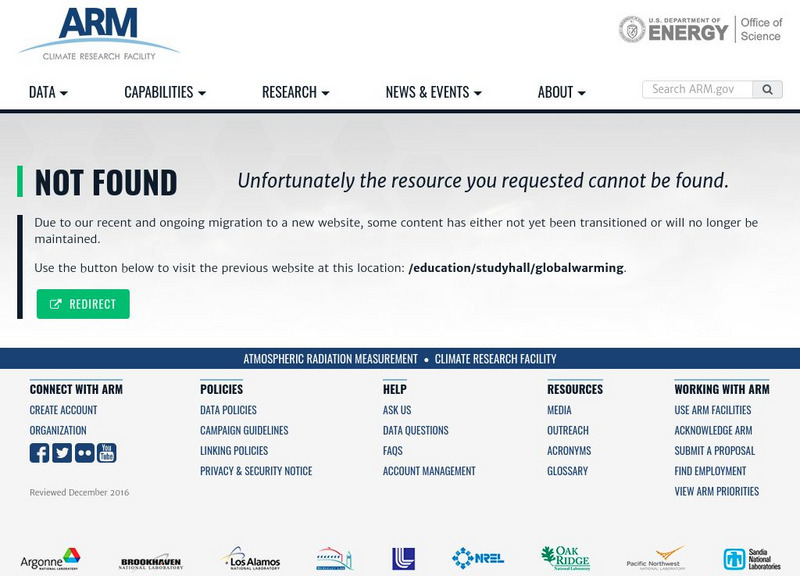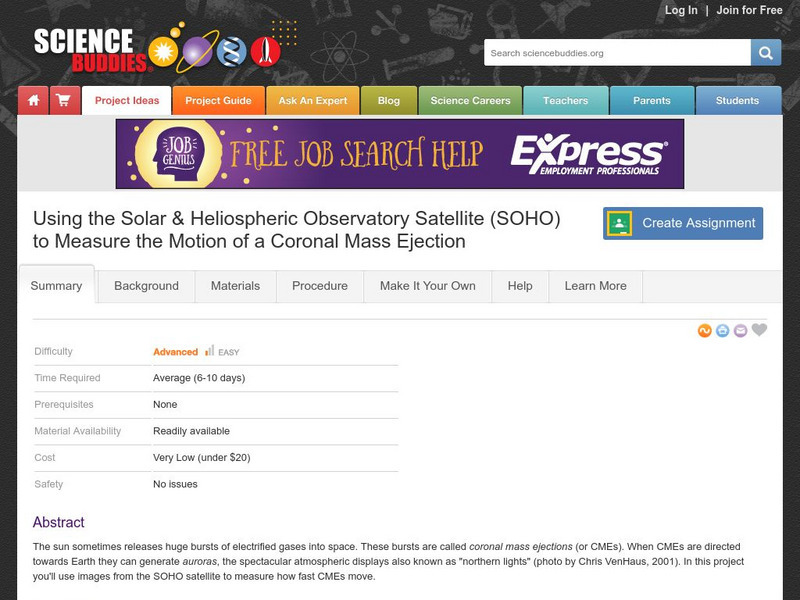Hi, what do you want to do?
Other
California Air Resources Board: The Greenhouse Effect and California [Pdf]
This article has a brief summary of the causes and possible consequences of the greenhouse effect and global warming. In particular, the effects of the potential climate change in California are highlighted.
University Corporation for Atmospheric Research
Ucar: Why Does Climate Change?
Factors that have the power to change global climate can be natural, like volcanic eruptions and changes in solar energy, or caused by humans, like the addition of greenhouse gases to the atmosphere.
Other
Breathing Earth
Breathing Earth layers data about rates of carbon dioxide emission along with birth and death rates onto a map of the world in a real-time simulation of one of the principal greenhouse gases in the Earth's atmosphere, CO2.
University Corporation for Atmospheric Research
Ucar: Methane
Brief article explores methane, a flammable gas found in the Earth's atmosphere.
NASA
Nasa: Weather
Though we live on the surface of the Earth, we actually live at the bottom of an ocean of air. Dynamic layers of air interact with the Earth's surface and the Sun's energy to produce the phenomenon of weather. The atmosphere is...
King's Centre for Visualization in Science
Explaining Climate Change: Lesson 2: Is Climate Change Happening?
This is the second lesson in a series of learning modules on the topic of climate change. It examines what climate change is, how it relates to greenhouse gas concentrations over time, and temperature trends. Includes comprehension...
Science4Fun
Science4 Fun: Nitrogen
Fun and interesting information about Nitrogen, the most abundant gas in the atmosphere. Learn about its characteristics, uses, where it is found, and discovery.
Energy4Me
Energy4me: Air Quality
Find out how the production of natural gas and oil can result in the release of hydrocarbons and other emissions into the air.
Climate Literacy
Clean: Carbon Footprint
In this lesson students investigate how much greenhouse gas (carbon dioxide and methane) their family releases into the atmosphere each year and relate it to climate change. To address this, students use the Environmental Protection...
PBS
Pbs Learning Media: Understanding Air: Climate Change and Modeling Combustion
For this lesson, students learn about the components of air and the chemical reactions that release carbon dioxide into the atmosphere and explore the connection between carbon dioxide, climate change, and environmental health.
American Geosciences Institute
American Geosciences Institute: Earth Science Week: Chemistry of Burning
In this activity, students use pipe cleaners and foam balls to build a model of a hydrocarbon molecule. They then modify it to demonstrate the chemical reaction that happens when the hydrocarbon is burned.
Other
Arm Program's Education Center: Global Warming
An all purpose site with something for everyone. Learn about global warming and climate change, ask a scientist, take a quiz, or get a lesson plan!
University of Colorado
University of Colorado: Ph Et Interactive Simulations: Molecules and Light
An interactive simulation that teaches about molecules, photons, and absorption by exploring how light interacts with molecules in our atmosphere. Through this simulation students can get a better understanding of the importance of the...
TeachEngineering
Teach Engineering: Air Pollution
Students are introduced to the concept of air quality by investigating the composition, properties, atmospheric layers and everyday importance of air. They explore the sources and effects of visible and invisible air pollution. By...
Other
Aquaholic: Introduction to Boyle's Law
Provides a great introduction to Boyle's Law as well as a link to a more detailed explanation if that's what you're looking for. Gives a real life example that is very helpful in comprehending the law.
Science Buddies
Science Buddies: Observatory Satellite Measures Motion of Coronal Mass Ejection
The sun sometimes releases huge bursts of electrified gases into space. These bursts are called coronal mass ejections (or CMEs). When CMEs are directed towards Earth they can generate auroras, the spectacular atmospheric displays also...





![California Air Resources Board: The Greenhouse Effect and California [Pdf] Handout California Air Resources Board: The Greenhouse Effect and California [Pdf] Handout](https://static.lp.lexp.cloud/images/attachment_defaults/resource/large/FPO-knovation.png)








